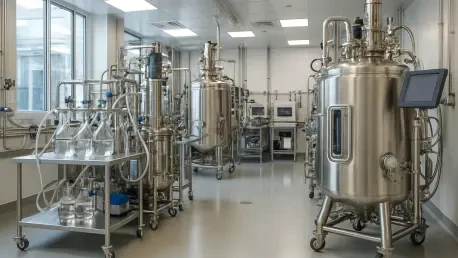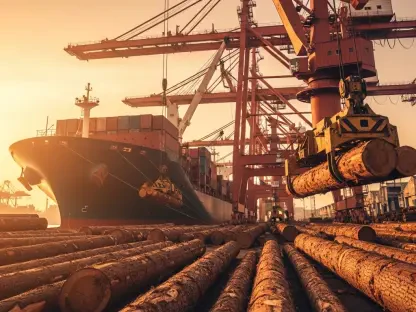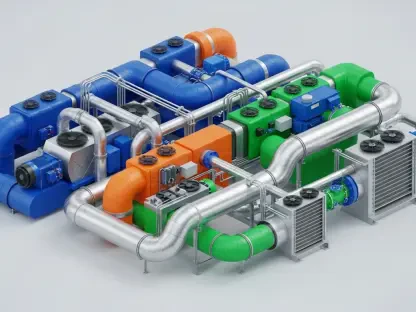In a nation heavily reliant on a steady supply of life-saving medications, the stark reality that many pharmaceutical manufacturing facilities are situated in regions increasingly vulnerable to natural disasters raises profound concerns. From hurricanes tearing through coastal areas to wildfires raging across western states, the geographic concentration of these critical sites in high-risk zones threatens the stability of the U.S. healthcare system. Recent events and research have illuminated the fragility of this supply chain, where a single catastrophic event can lead to widespread drug shortages, impacting patient care on a national scale. The convergence of climate change and industrial consolidation amplifies these risks, painting a troubling picture of potential crises that could unfold if proactive measures are not taken. This pressing issue demands attention, as the consequences of inaction could be dire for millions who depend on consistent access to essential medical supplies.
Vulnerability of the Pharmaceutical Supply Chain
Exposed Facilities in High-Risk Zones
The pharmaceutical industry’s exposure to natural disasters is a growing concern, with a significant portion of manufacturing facilities located in areas prone to environmental threats. A recent study published in JAMA by researchers from Harvard Medical School and the American Cancer Society analyzed nearly 11,000 U.S. facilities involved in drug production over a five-year period. The findings revealed that approximately 63% of these sites—over 6,800 facilities—are situated in counties that have experienced at least one disaster declaration during that span. These declarations encompass a range of events, including hurricanes, floods, wildfires, tornadoes, and severe storms. Such widespread vulnerability underscores the systemic risk embedded in the current geographic distribution of production centers. With many facilities clustered in regions historically susceptible to extreme weather, the potential for simultaneous disruptions across multiple sites during a single event is alarmingly high, posing a direct threat to the availability of critical medications and medical devices.
Beyond the sheer number of at-risk facilities, the specific nature of these disasters adds another layer of complexity to the challenge. Hurricanes, identified as a primary threat, often bring devastating winds and flooding that can incapacitate infrastructure for weeks or months. Wildfires, increasingly destructive due to shifting climate patterns, threaten facilities with both direct damage and prolonged air quality issues that hinder operations. Tornadoes and severe storms, striking with little warning, can cause sudden and severe destruction to localized areas. This diverse array of hazards means that no single mitigation strategy can fully protect the supply chain. The concentration of production in just a few key regions exacerbates the impact of any disruption, as alternative sources may not be readily available to pick up the slack. This precarious setup highlights the urgent need for a reevaluation of where and how essential drugs are manufactured to ensure resilience against inevitable natural calamities.
Real-World Impacts of Disasters on Production
When natural disasters strike, the consequences for pharmaceutical production can be immediate and far-reaching, as evidenced by recent high-profile incidents. Hurricane Helene, for instance, wreaked havoc on Baxter’s North Cove facility in North Carolina, severely disrupting the nation’s primary supply of intravenous (IV) and peritoneal dialysis solutions. The damage caused by this event led to shortages that persisted for months, affecting hospitals and patients nationwide. Such incidents are not isolated; they reveal a pattern of vulnerability where a single facility’s downtime can create a ripple effect across the entire healthcare system. The reliance on concentrated production sites means that even a temporary closure can translate into critical delays for patients who depend on these therapies for survival, exposing a glaring weakness in the current framework of drug manufacturing.
Historical examples further illustrate the recurring nature of these disruptions and their profound impact on public health. In 2017, Hurricane Maria devastated a Baxter facility in Puerto Rico, leading to similar shortages of vital medical solutions. The aftermath saw healthcare providers scrambling to ration supplies, with some patients facing life-threatening delays in treatment. These events demonstrate how localized disasters can have national, and even global, repercussions due to the interconnected nature of the pharmaceutical supply chain. The repeated occurrence of such crises points to a systemic issue that goes beyond individual facilities—it reflects a broader lack of redundancy and preparedness in the industry. As climate patterns evolve and extreme weather events become more frequent, the likelihood of future disruptions only increases, necessitating strategic interventions to safeguard against inevitable challenges.
Escalating Risks and Necessary Actions
Climate Change Intensifying Threats
The escalating severity of natural disasters, driven by climate change, presents an ever-growing challenge to the pharmaceutical industry’s stability. Hurricanes are intensifying more rapidly than in previous decades, delivering heavier rainfall that causes flooding even in inland areas, as seen with recent storms like Helene. Wildfires are burning larger swaths of land earlier in the season, threatening infrastructure with both direct destruction and secondary effects like smoke-related operational halts. Meanwhile, tornadoes are shifting into regions previously considered low-risk, catching communities and industries off guard. These shifting patterns mean that areas once deemed safe for manufacturing may no longer offer the security they once did. The convergence of these environmental shifts with the existing concentration of drug production facilities creates a perfect storm of risk, where the likelihood of catastrophic disruptions continues to rise.
Addressing this heightened threat requires a deeper understanding of how climate trends intersect with industrial planning. The increasing unpredictability of weather events complicates long-term strategies for facility placement and disaster preparedness. Facilities built decades ago under different environmental assumptions now face conditions they were not designed to withstand. This mismatch between historical data and current realities can lead to underestimation of risks, leaving critical infrastructure exposed. Moreover, the financial cost of retrofitting existing sites or relocating production to safer regions is substantial, often deterring swift action. Yet, the cost of inaction—measured in disrupted supply chains and compromised patient care—far outweighs these expenses. Industry stakeholders must prioritize forward-thinking approaches that account for evolving climate risks to prevent future crises from derailing access to essential medications.
Strategic Solutions for Resilience
Looking back, the repeated disruptions to pharmaceutical production, such as those caused by Hurricanes Helene and Maria, underscored a critical lack of resilience in the supply chain. These events, which halted the availability of vital medical solutions for extended periods, exposed how concentrated manufacturing in disaster-prone areas left the nation vulnerable to shortages. The data from comprehensive studies, revealing that over 60% of facilities faced disaster declarations in recent years, painted a stark picture of systemic fragility. Each incident served as a painful reminder that the current setup was ill-equipped to handle the growing frequency and intensity of natural disasters, often leaving healthcare providers and patients in desperate straits.
Moving forward, building a more robust pharmaceutical supply chain demands strategic planning and transparency to mitigate future risks. Industry leaders should consider diversifying production locations to avoid over-reliance on high-risk zones, potentially spreading facilities across less vulnerable regions. Additionally, investing in disaster-resistant infrastructure and creating redundancies in the supply chain can help buffer against sudden disruptions. Experts like Leticia Nogueira from the American Cancer Society have emphasized the importance of supply chain transparency to better anticipate and manage crises. Collaborative efforts between government, researchers, and manufacturers could drive policies that incentivize safer geographic distribution and preparedness. By taking these proactive steps, the industry can work toward a future where access to life-saving drugs remains uninterrupted, even in the face of nature’s most formidable challenges.









